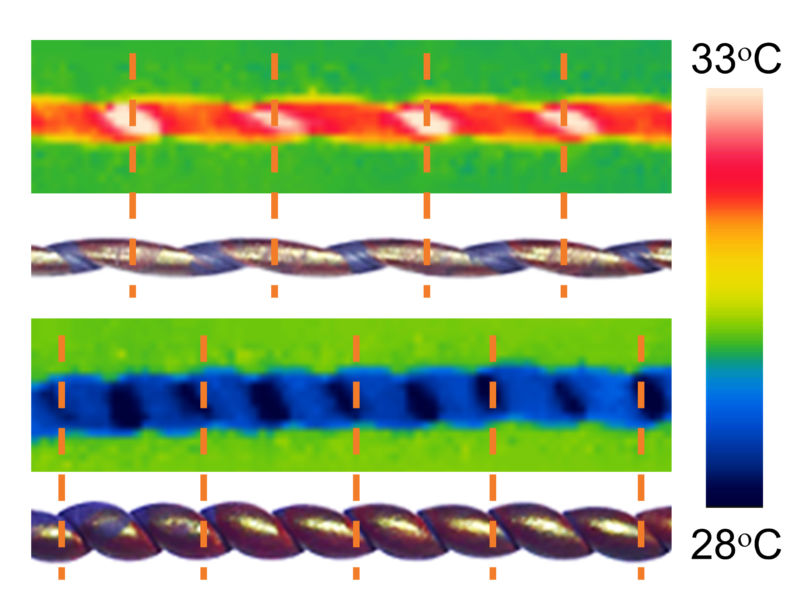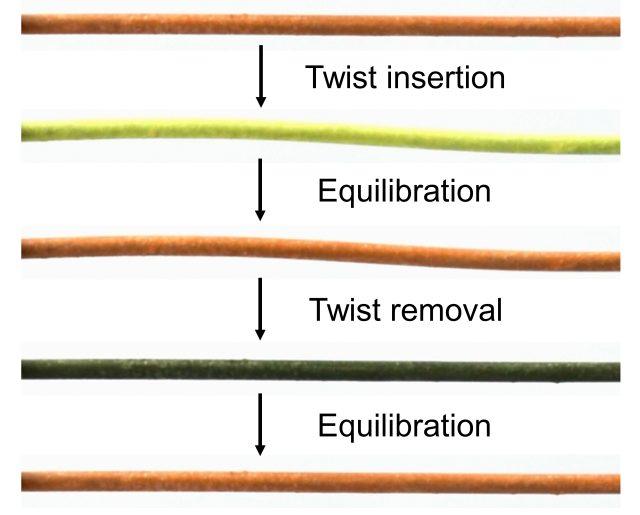
Though some producers have tried to boost fridges with an Web-of-Issues capability, few of us have discovered automated egg-inventory-tracking notifications a compelling improve. So are any actual technological revolutions doable for this humble dwelling equipment?
A staff of researchers led by Nankai College’s Run Wang and the College of Texas at Dallas' Shaoli Fang actually thinks so. They’re not fascinated by the entrance of the fridge, although—for them, the celebration is within the again. They're trying to substitute compressed fuel coolants with a twisted strong.
It’s strong
Fridges have future on a vapor-compressor design that makes use of circulating coolant to pump warmth power out of the fridge and into your kitchen. At this level, we have just about maxed out the potential power effectivity of that design, which is not ultimate. Additionally not ultimate is the truth that the coolants used will not be with out issues in the event that they leak—issues vary from well being hazards to a historical past of ozone depletion to their conduct as greenhouse gases.
There's, in concept, not less than one strategy to pump warmth extra effectively, and that is to control the entropy of strong supplies. You may very well have skilled this in a chemistry class, stretching or enjoyable a rubber band and rapidly holding it to your pores and skin to really feel it heat or cool. The polymer fibers inside a rubber band are oriented randomly, however whenever you stretch the band, the fibers are pulled right into a extra constant—and subsequently ordered—orientation. That is a lower of entropy. Chill out the band and it reverts to disordered chaos (greater entropy). This causes the band to soak up or launch warmth power.
The researchers' concept was to—fairly actually—put their very own twist on that phenomenon. By twisting strands of comparable supplies, they hoped to amplify the temperature change and make this course of far more sensible for a bodily machine. Conventional vapor compression units can attain about 60% of theoretical cooling effectivity, however this "elastocaloric" course of (or this new "twistocaloric" tackle it) has the potential to hit about 84% effectivity.
The staff examined their system with numerous configurations of strands of rubber, fishing line, and the distinctive nickel-titanium alloy typically referred to as "reminiscence wire." With a thermal digital camera, they measured the temperature change as they twisted, coiled, stretched, and relaxed the fibers to see what might generate the most important temperature swings.
Rubber bands and fishing line
Merely stretching and enjoyable some rubber, for instance, solely modified the temperature by about 2.5°C. Twisting it right into a spring-like form raised that to six.5°C and required much less stretching distance. Twisting it much more till the coils themselves started to coil up on one another—giving it a knobby look—added one other diploma or so.
Merely twisting and untwisting the rubber labored even higher, with a median temperature change of about 12°C. Including a little bit of stretch gained a pair extra levels. In comparison with the roughly 60% effectivity of conventional refrigeration, twisting the rubber hit about 63%, and twisting plus stretching hit 67%.
The assessments with fishing line included an attention-grabbing configuration: twisting the road one route right into a coil after which wrapping that coil round a submit in the other way. Stretching this setup truly untwists the road as a substitute of twisting it tighter, reversing the warming/cooling cycle. In some circumstances, it even elevated the temperature swing.
The nickel-titanium "reminiscence wire," although, could maintain essentially the most promise. It is notably elastic for a steel and has the outstanding party-trick capacity to return to an initially set form, no matter how a lot it has been bent, simply by altering the temperature. Reminiscence wire can try this as a result of the crystalline group of its atoms can swap between a pair totally different geometries which are secure at totally different temperatures. Change the temperature sufficient and the atoms will soar into the opposite geometry.

Wang et al./Science
Occasion trick apart, these properties are fairly helpful for twist cooling. Untwisting a single 0.7 millimeter large wire causes a 14°C temperature drop. Twisting 4 wires collectively led to an 18°C drop. This was run by 1,000 cycles with none measured drop in efficiency.
As a kind of proof of idea, the staff put one among these wires in a skinny tube with an inlet and outlet and pumped a trickle of water by it. The researchers solely ran it by one cooling cycle, merely untwisting the wire, however they measured an virtually 8°C cooling of the water by the tube.
After all, to strategy a functioning fridge, this design must be cycled endlessly, with all the warmth absorbed by the wire deposited outdoors the machine. However twist cooling stands out as the innovation that's wanted to take this from a chemistry-class demo to a believable sensible mechanism. Sometime, your fridge may very well be whirring with the twisting and untwisting of little wires as a substitute of the grumbling sounds you are accustomed to as you ponder that midnight snack.
Science, 2019. DOI: 10.1126/science.aax6182 (About DOIs).
